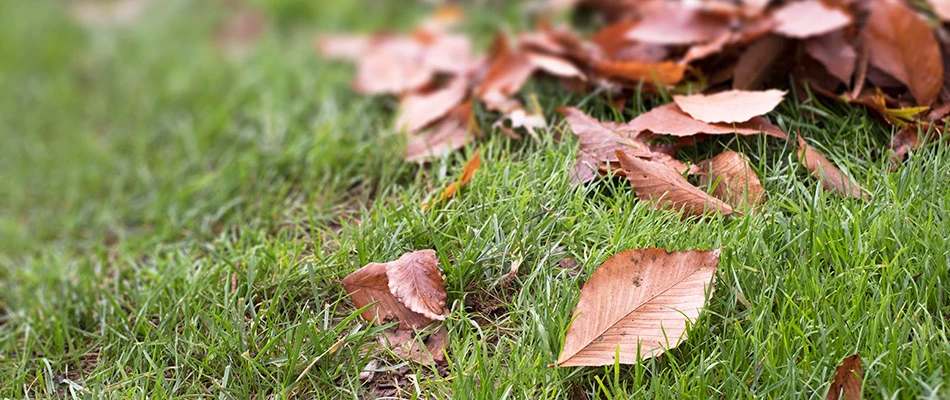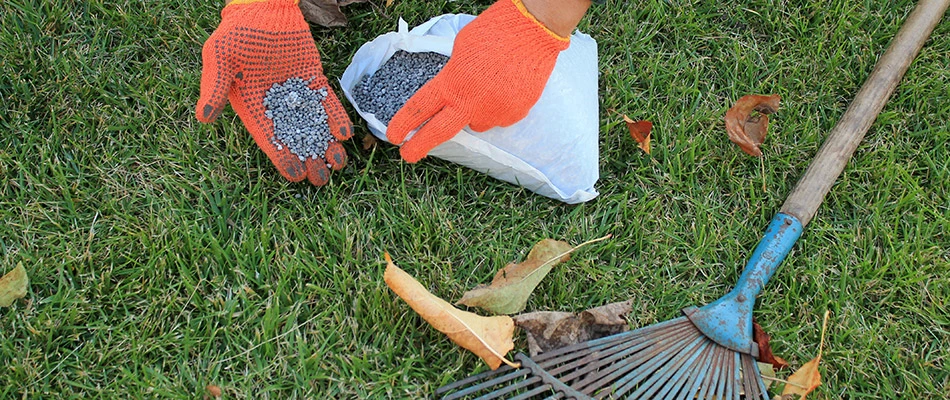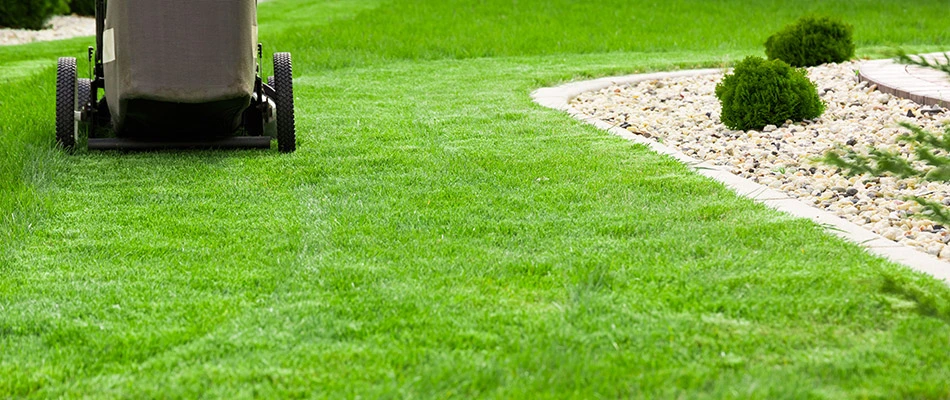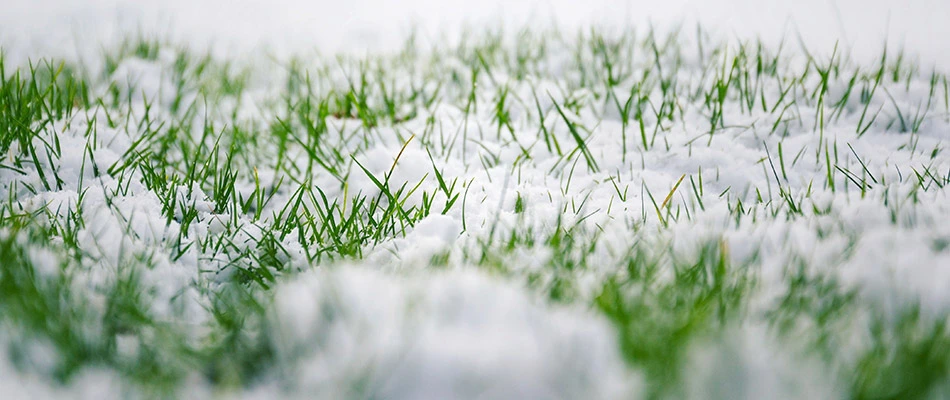Here in Macomb, MI, we get roughly 32 inches of snow per year. So, as a property owner, you can be certain we will see ample snowfall annually. But since snowfall coincides with the busy holiday season, snow often arrives before many property owners can prepare for it.
Don't let winter catch you off guard, make sure you properly prepare for the coming snow. Otherwise, you could end up doing twice the work to maintain your lawn come spring. You should do three things for your lawn before the snow begins piling up: remove leaf piles, add a winter fertilizer treatment, and mow your lawn to the correct height.
1. Remove leaf piles.

Leaf piles that blanket your lawn in the winter tend to cause several problems and should be removed before winter hits. They attract insects that use the leaves as a warm shelter. Leaves also invite lawn fungus and disease to your yard. And should snow happen to fall on these old leaf piles this winter, that will drastically increase the odds of attracting lawn diseases such as snow mold.
Property owners can avoid facing lawn pest invasions or lawn disease by having a lawn maintenance professional remove the leaves. Removing those massive leaf piles also helps maintain your property's curb appeal. If you have old fallen leaves on your property, there's still time to remove them before the first snowfall.
Look for a company that will not only blow leaves to the curb but will also haul them away for you.
2. Add a winterizer fertilizer treatment.

Lawns in this region, tend to have cool-season grass. Cool-season grass stops growing when temperatures get low enough. The consensus is that here in %%statefull%, this occurs when the weather consistently stays below 45 degrees Fahrenheit.
Once your lawn goes into winter dormancy, it relies on stored reserves for nutrition. That's why it's critical you fortify your lawn beforehand with a winterizer fertilizer treatment. Ideally, you want this final fertilization of the year to be high in essential nutrients such as nitrogen, phosphorus, and potassium. The nitrogen will serve to help your lawn regain its vibrancy in the spring, phosphorus will encourage strong root growth, and the potassium helps reinforce the cell walls of your grass so it retains more water over the winter.
3. Mow your lawn to the correct height.

If your yard contains cool-season grass such as Kentucky bluegrass, ryegrass, or tall fescue, it will likely continue growing through most of the fall. That's because cool climates are more suited to cool-season grasses. For this reason, it's best to avoid mowing your lawn too low ahead of winter as this could stress your grass. The optimal height to cut cool-season grasses ahead of winter is between 2.5 to 3 inches.
Get your lawn ready for the snow with our lawn services. Contact us today to speak with a lawn care pro!
Don't let snowfall arrive before you've had an opportunity to prepare your lawn for our long winters. Should winter get here before you've prepared your lawn, your turf could experience challenges in the spring. At Big Lakes Lawncare, we help property owners maintain and care for their lawns year-round. We also have a strong history of offering leaf removal, lawn mowing, and winter fertilizer treatments to residential, commercial, and HOA property owners. So, you can count on us to ensure your lawn is fully prepared for winter.
Our technicians service Macomb, Shelby, Chesterfield, and surrounding areas in Michigan. If you're nearby and haven't prepared your lawn for the upcoming winter, we can help. But don't wait - contact us today at (586) 200-0855 to schedule our lawn winterization services!




Comments (0)
Thanks for your comment!
Thanks for your feedback! Your comments have been successfully submitted! Please note, all comments require admin approval prior to display.
Error submitting comment!
There is a problem with your comment, please see below and try again.